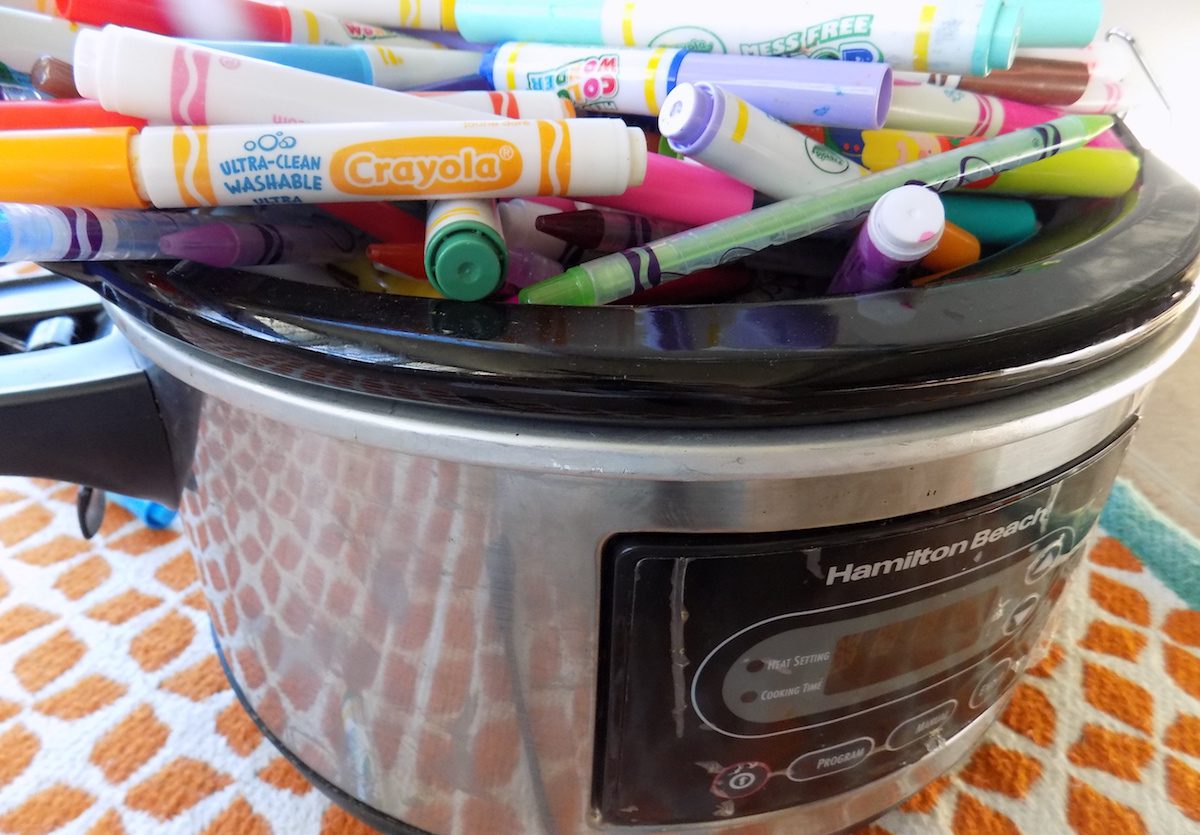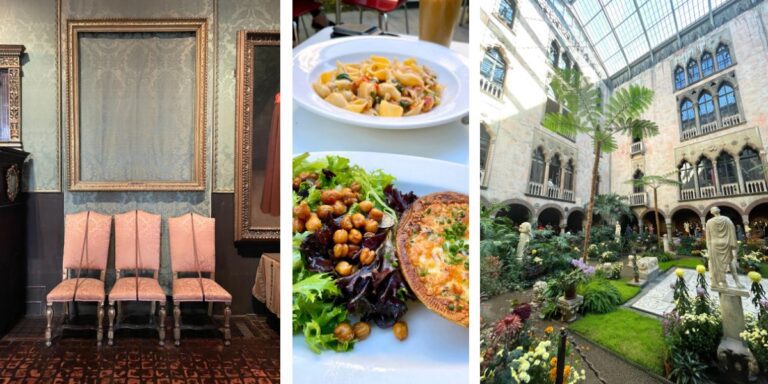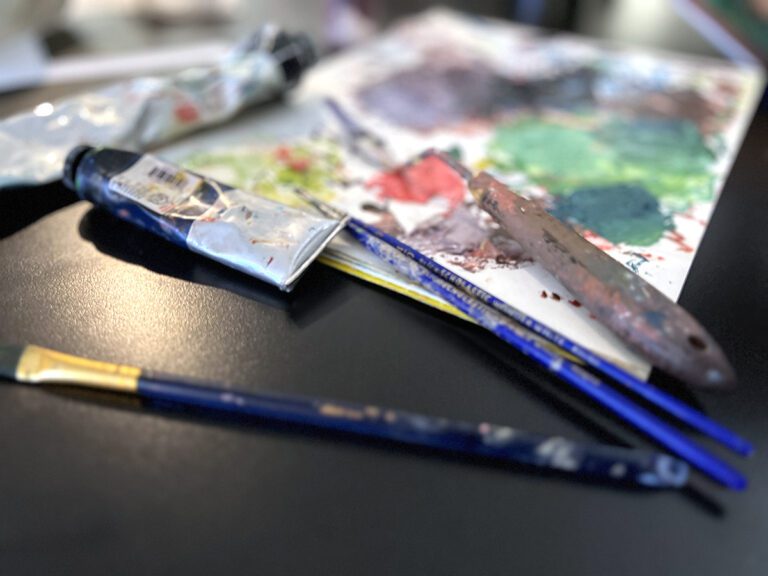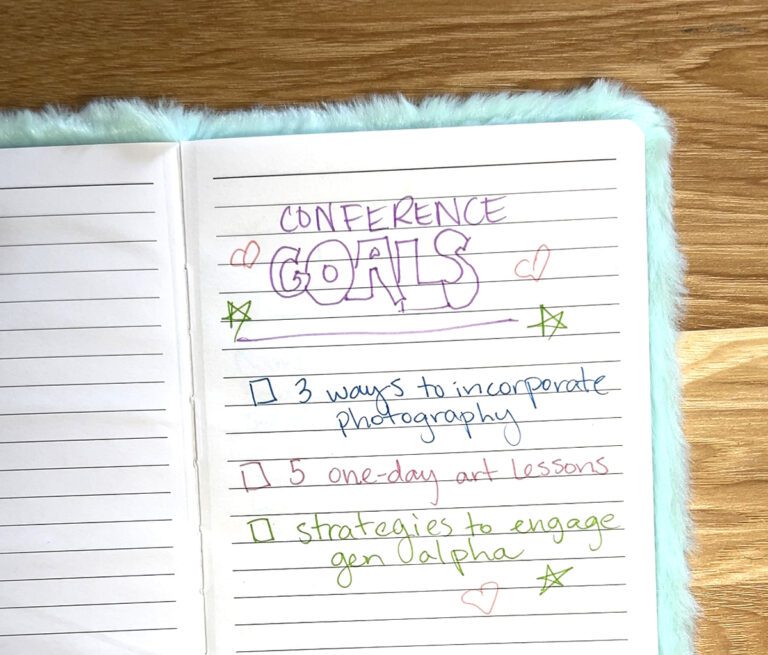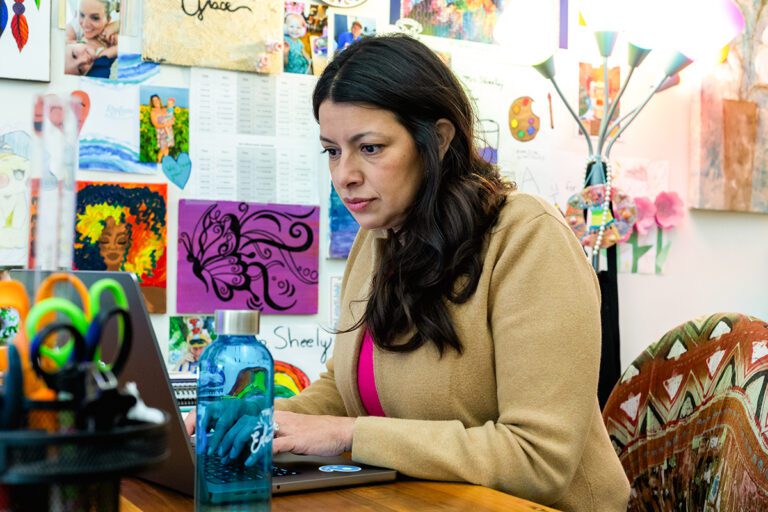One component of being an art teacher is participating in ongoing professional growth. Continuous learning improves our instruction and thus our students’ art experience. But, no matter how well-meaning and supportive our districts’ PD plans are, truly relevant professional development rarely originates from people outside our specialty content area. So what does this mean for art teachers?
It means we can’t just focus on educating kids. We also have a responsibility to advance the profession by sharing the best of what we know with one another.
But, taking a leadership role can seem daunting. Here is a simple strategy for organizing a highly-effective PD session I like to call “The PD Potluck.” The best part of a “PD Potluck” is it requires minimal work on your part, making it an ideal and effective leadership strategy for busy art teachers!
Here are the six steps you’ll need to know to get your own potluck started right away!
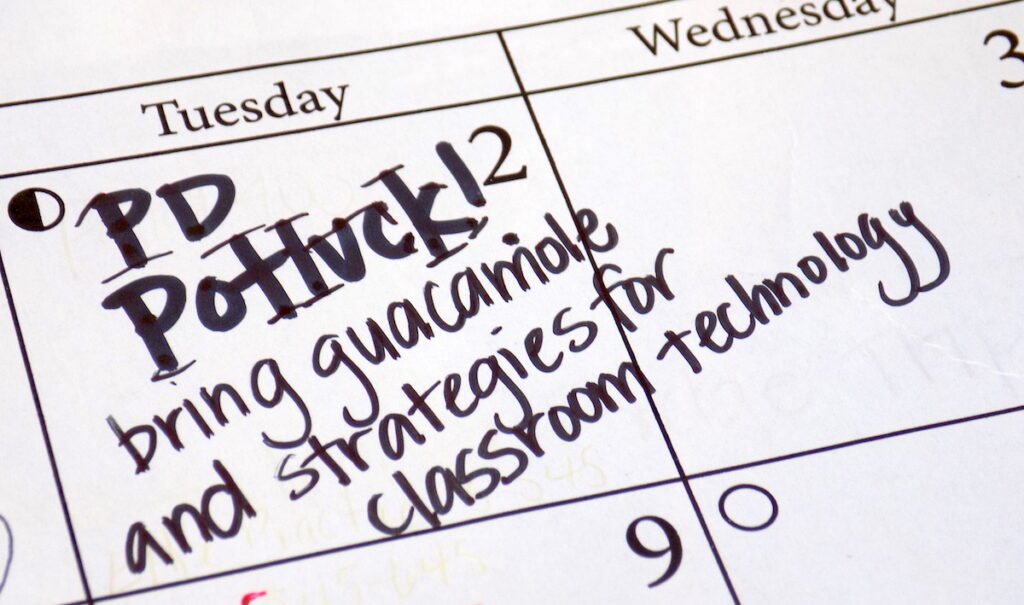
Step 1. Get Out of Your Own Way and Sign Up To Do It!
I used to believe I didn’t have any business leading other teachers. After all, I’m not a perfect teacher myself. I read the national blogs with wonderment, both inspired and intimidated by art teachers who seem to do it all. What on earth would I have to share, when compared with those people?
Well, maybe a lot! We can all agree each of our students has something beautiful and unique to share, but sometimes we are hesitant to apply that same logic to ourselves. The reality is every one of us has individualized tips, tricks, ideas, and teaching experiences essential to our practice and hugely helpful to one another when shared. So, put aside your personal insecurities (if you have ’em) and commit to getting directly involved in the PD process.
Step 2. Consider a “PD Potluck” As Your Format.
Effective adult education is differentiated for the participants, relevant to their specific teaching positions, and honors their knowledge and experience by allowing them to contribute to the PD process in dynamic ways. This is why a “PD Potluck” is the easiest and most effective format for PD.
So what is it? Think back to the last potluck you went to. Each person brought a dish they were proud of, something yummy they wanted to share with the group. What resulted was a diverse smorgasbord that everyone was happy eating. Each person was able to take a small helping of the foods that attracted them, and forget about the foods that didn’t work for them. Whether you are vegetarian, allergic to nuts, or gluten free, there was SOMETHING at that potluck for you.
A PD Potluck is identical in nature, just without the deviled eggs. You invite a diverse group of art teachers and ask them to each bring a “dish to pass.” Tell them they are each individually responsible for an informal five-minute presentation about something in their practice they are really proud of. Explain they can use whatever format makes them the most comfortable. It could be a PowerPoint, a quick talk, a video, a lesson plan, a resource, anything! Make sure they understand the best part; they are trading a little bit of personal preparation for a ton of great information from their colleagues!
As the facilitator of the potluck, you will need to present, too. Additionally, you will need to fulfill a couple of other roles, outlined in the next steps. Come on, you can’t eat the potato salad if you don’t bring something to share!
Step 3. Choose a Theme
You could keep things open ended with a “PD Potluck,” and allow the participants to bring any topic or nugget of helpful information to share. Or, you could focus in on a specific topic to serve the needs of your group or your district. (Think “typical potluck” vs. “soup and salad potluck.”)
Some potential Potluck themes could be…
- Strategies for reaching special education learners in the art room
- Changes to your curriculum to reflect new the National Standards
- Technology resources in the art room
- Favorite lesson plans
- Art room hacks/tips and tricks
- Assessment tools that are actually working
- Supply orders (must-haves and great deals)
- Classroom management ideas
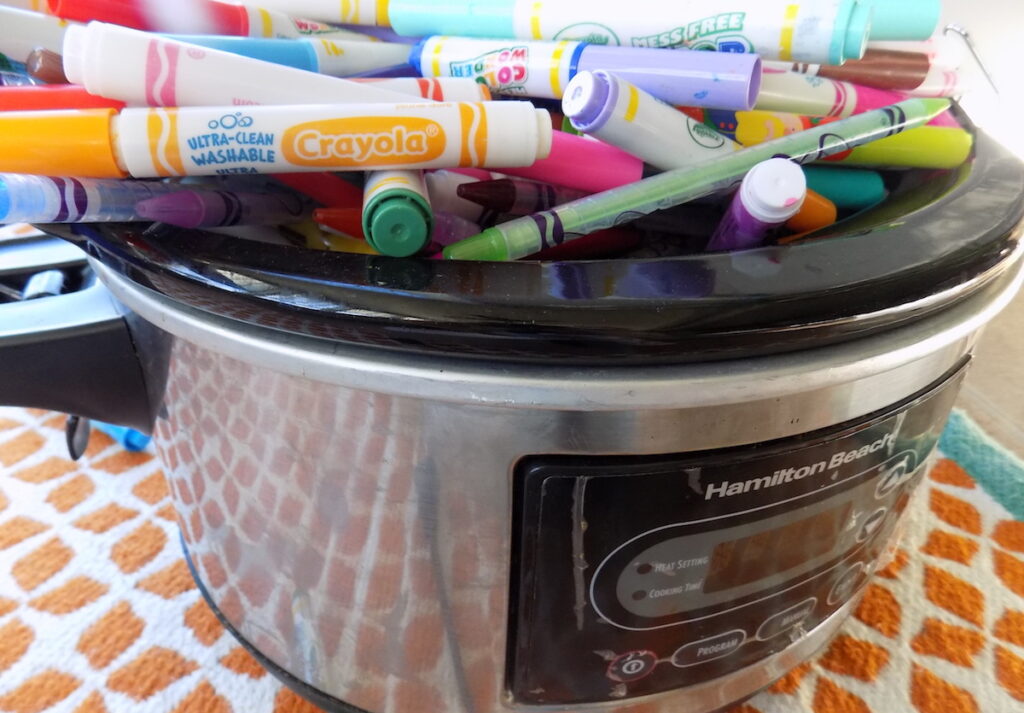
Step 4: Invite Your Participants
Before sending out invitations, you’ll need to do a little math. Consider the amount of time you have been allotted and divide it into five-minute increments. This should give you a rough idea of how many participants can realistically be a part of your potluck, and then you can begin inviting them.
While the potluck concept is pretty well explained through the metaphor, many adult learners may be accustomed to more passive PD presentations. So, as you send an email to invite your participants and explain the process, you may want to provide an example of what they are being asked to bring.
The easiest way to do this would be to provide a copy of what you intend to share when you send the initial invitation. This de-mystifies the process and gives your participants a concrete example of the types of things they might want to bring. Your modeling helps clarify expectations and make people feel more comfortable.
Additionally, if you want to add an actual food component (like potluck snacks), this is the time to add it to the communications!
Step 5. Identify a Strategy for Capturing Information
When it’s finally time for the big day, the potluck will be full of exciting things you can’t possibly “put on just one plate.” I think many of us have experienced that feeling; like when you are at an Art Ed Now conference and the great ideas are coming so fast, you can barely write them all down!
As the facilitator, you will need to help the group manage all the ideas they are hearing so they have time to reflect and focus on what’s being shared.
Here are a few ideas you could implement to help preserve learning for the group to access later:
- Record the presentations
- Take a “master set” of notes yourself, freeing others up to just listen
- Create a Google Drive of all the files from the presenters
- Create a paper packet with handouts and resources from all the presenters
Step 6. Sit Back and Watch the Magic!
When the potluck begins, break the ice by volunteering to go first with your presentation. Don’t be nervous, because you are in a unique presentation situation… literally, everyone else in the room is in the same boat!
Then, prepare to watch an AMAZING PD session. All of your colleagues have brought their “best casseroles” to share, and it’s fascinating to hear about all the exciting things going on in their classrooms. In addition to gaining some stellar ideas, you are laying the foundation for a more collaborative art department… and that, in itself, is the icing on the cake.
What other strategies do you use to plan PD?
Have you ever participated in a “potluck” or round table? What other tips would you add?
Magazine articles and podcasts are opinions of professional education contributors and do not necessarily represent the position of the Art of Education University (AOEU) or its academic offerings. Contributors use terms in the way they are most often talked about in the scope of their educational experiences.
